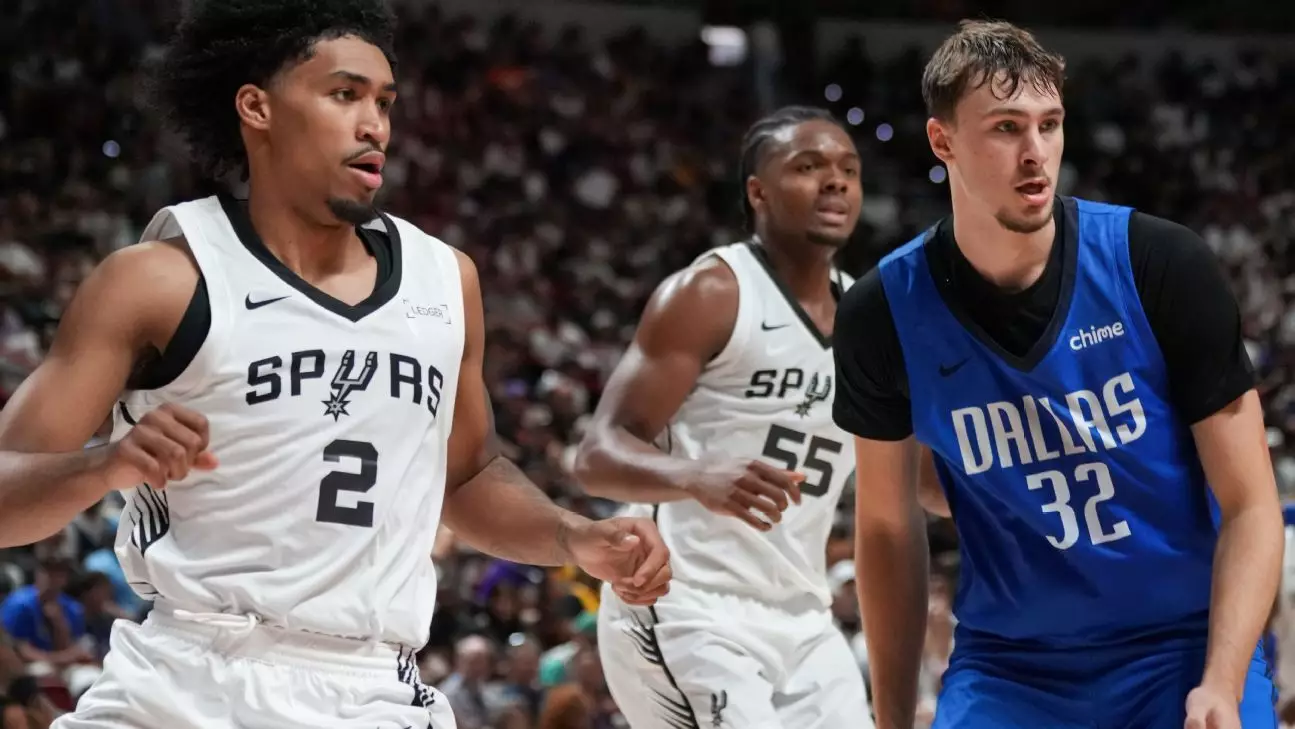As the NBA shuffles into a new era filled with fresh faces and rising hopes, the spotlight often blazes brightest on the hype surrounding its youngest prospects. The recent clash between Cooper Flagg and Dylan Harper—draft favorites for the 2025 season—symbolizes more than just a summer league spectacle; it exemplifies the ongoing tension between expectation and reality in professional sports development. While their performances at the Thomas & Mack Center offered moments of excitement, one must question whether these displays are truly indicative of future greatness or merely a fleeting mirage fueled by spectacle and hype.
Many fans and analysts are seduced by the narrative of young stars emerging to redefine the game. Flagg, with a commanding 31-point performance, and Harper, showcasing resilience after injury, embody the hope for a rejuvenated NBA universe. Their individual highlights—dynamic dunks, defensive blocks, and clutch plays—are celebrated not just for their aesthetic appeal but because they promise a future where the league’s identity can evolve around fresh, electrifying talent. But beneath this veneer of optimism lies a complex reality: developing stars in today’s NBA is a multifaceted challenge that involves system compatibility, mental fortitude, and sustainable growth—elements often overlooked amid the fervor of summer league spectacle.
Is the League Overestimating These Prospects?
The excitement generated by these debut performances is undeniable; however, it risks obscuring a more critical perspective. Summer league games, while valuable, are inherently limited in their predictive power. They are more akin to auditions than definitive indicators of future stardom. Flagg’s impressive stat line could be a product of matchups, coaching strategies, or even the adrenaline of a first appearance. Similarly, Harper’s spectacular defensive play, although electrifying, is just a fragment of what it takes to succeed consistently in the NBA’s high-pressure environment.
Falling into the trap of overvaluing summer league highlights often leads to inflated expectations that are rarely sustainable. The transition from summer league hero to NBA superstar is treacherous. It demands not only talent but maturity, adaptability, and, importantly, support systems that foster growth amid the pressures of a professional career. While Flagg and Harper show promise, both must contend with a basketball ecosystem prone to hype cycles, where media narratives can distort genuine development and produce unwarranted panic or premature praise.
The Broader Implications for the League’s Future
Beyond individual talent, the league itself faces a profound reckoning. The infusion of rookie talent like Flagg and Harper might rejuvenate interest among younger audiences, but it also underscores a systemic issue: the NBA’s reliance on sensationalism to maintain relevance. This obsession with highlight reels risks overshadowing the importance of holistic player development, team building, and the cultivation of competitive integrity.
From a liberal-leaning perspective, one might argue that the league’s current focus on spectacle over substance reflects broader societal trends toward instant gratification rather than genuine progress. Fans are often more captivated by the ‘next big thing’ than the intricate strategies or long-term project management necessary for sustained success. Such a culture contributes to a cycle where talent is celebrated prematurely, and potential is mistaken for permanence. Consequently, the NBA risks creating a volatile environment where hype can quickly give way to disillusionment, undermining the very foundation of its competitive credibility.
In this context, the league must adopt a more balanced approach—one that nurtures genuine growth rather than succumbs to the allure of viral moments. Supporting young players through structured development programs, emphasizing mental resilience, and fostering a culture that values patience over immediate success could help prevent the pitfalls of short-term hype cycles. Only through such reforms can the NBA ensure that the talents of Flagg and Harper—and others like them—are realized in a manner that benefits both the sport and its diverse global community.
The Cost of Ignoring Depth and Experience
While the fresh energy brought by these prospects is invigorating, a cautious view emphasizes the importance of grounding expectations in realism. Talent alone does not define lasting greatness; experience, leadership, and the ability to handle adversity are equally vital. The league’s most enduring stars—LeBron James, Stephen Curry, Tim Duncan—did not achieve greatness through isolated highlight moments but through persistent effort, strategic growth, and adaptability over years.
The danger lies in romanticizing potential without understanding the systemic barriers that can stifle it. Overhyped prospects risk burnout or disillusionment if they are rushed into the spotlight prematurely, especially in a league increasingly driven by superstar culture and social media narratives. Supporting these young players with comprehensive development pathways, mental health resources, and community support is crucial in fostering a sustainable path to stardom.
In the end, the NBA’s future hinges on its ability to balance excitement with prudence. The league must resist the siren call of immediate gratification and instead invest in cultivating well-rounded athletes capable of enduring the rigors of competitive basketball. This approach not only serves the athletes’ long-term interests but also sustains the league’s integrity—a fundamental requirement for maintaining a vibrant and socially responsible sport that reflects the diversity and complexity of its global audience.

Leave a Reply